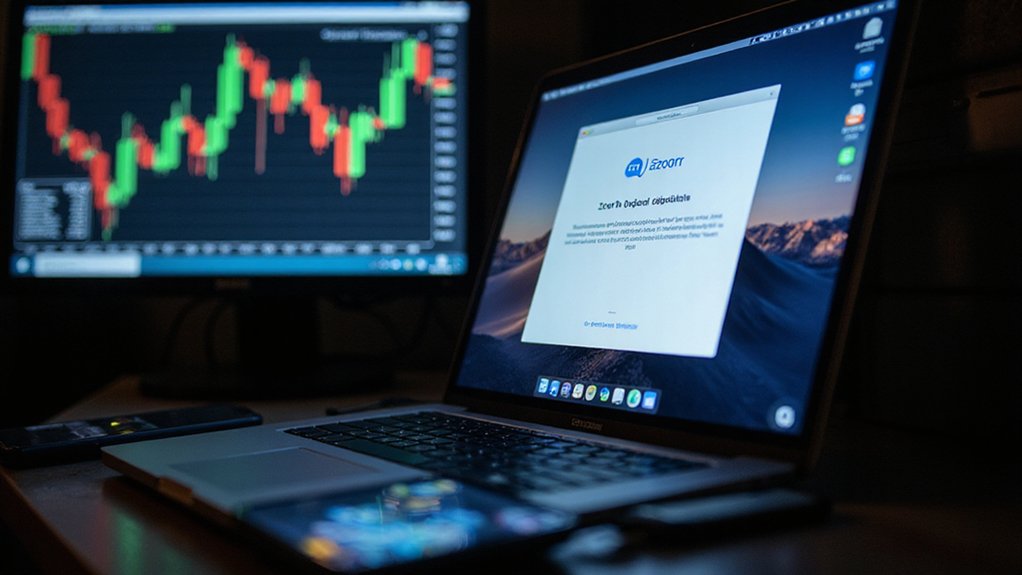The cryptocurrency sector—having weathered regulatory storms, market volatility, and the occasional existential crisis—now faces a convergence of threats that would make even the most battle-hardened Bitcoin maximalist pause for reflection.
While the market projects robust growth toward a $6.7 billion valuation by 2025 (maintaining its impressive 31.3% CAGR since 2017), North Korean state-sponsored hackers have emerged as perhaps the most sophisticated adversaries the digital asset ecosystem has encountered.
Despite promising $6.7 billion growth projections, North Korean hackers represent the cryptocurrency sector’s most formidable and sophisticated threat to date.
These cybercriminals have elevated social engineering to an art form, deploying fake Zoom update malware that infiltrates systems with surgical precision. The NimDoor backdoor, specifically crafted for macOS environments, represents a rare breed of malware tailored exclusively for cryptocurrency targets—a demonstration of both North Korea’s technical capabilities and their laser focus on digital asset theft.
Their persistent campaigns systematically target DeFi platforms, cryptocurrency exchanges, and the increasingly popular crypto ETFs, employing methods so stealthy that even seasoned cybersecurity professionals struggle to detect intrusions.
The irony is palpable: an industry built on decentralization and trustlessness finds itself vulnerable to the most centralized threat imaginable—a rogue nation-state.
FBI warnings underscore North Korea’s determination to compromise networks harboring substantial cryptocurrency holdings, while the sector simultaneously grapples with regulatory uncertainty that continues to influence market sentiment and institutional participation.
India exemplifies this regulatory complexity, classifying cryptocurrencies as Virtual Digital Assets subject to 30% taxation plus surcharge and cess, alongside a 1% Tax Deducted at Source implemented since mid-2022.
Despite these fiscal burdens, India ranks second globally in crypto transaction volumes, exceeding $260 billion—a remarkable achievement given the regulatory headwinds.
Meanwhile, venture capital investment reached $4.9 billion in Q1 2025, the highest level in over two years, signaling renewed confidence despite mounting cyber threats.
This influx of capital coincides with technological advances in blockchain infrastructure, smart contracts, and decentralized finance applications that continue expanding use cases. The attackers’ sophistication extends to using the Nim programming language for creating macOS-specific malware binaries, demonstrating their technical adaptation to target cryptocurrency organizations’ preferred operating systems.
The cryptocurrency sector’s resilience has been tested repeatedly, but the combination of sophisticated state-sponsored attacks, regulatory uncertainty, and rapid institutional adoption creates an unprecedented risk landscape that demands immediate attention from stakeholders across the ecosystem. The market’s hardware segment continues to dominate the global cryptocurrency landscape, with ASIC miners, GPUs, and specialized wallets driving infrastructure development despite increasing security concerns.
These security vulnerabilities highlight the critical importance of crypto custody practices, as organizations must protect their private keys from sophisticated attackers who specifically target digital asset storage systems.







